The enormous diversity in the crafts seen in India is a testimony to its rich history. It is the fusion of traditional pasts and customs that today the country enjoys numerous arts, crafts and handicraft traditions. These aspects are significant in understanding the core principles and beliefs a country adheres to.
Much of this handiwork has the distinction of a Geographical Indication (GI) tag, that goes a long way in preserving and promoting the said craft. Let’s delve into a few more of such examples of exquisite Indian crafts with a GI tag from the states of Tamil Nadu and Uttar Pradesh.
Tamil Nadu
Thanjavur painting
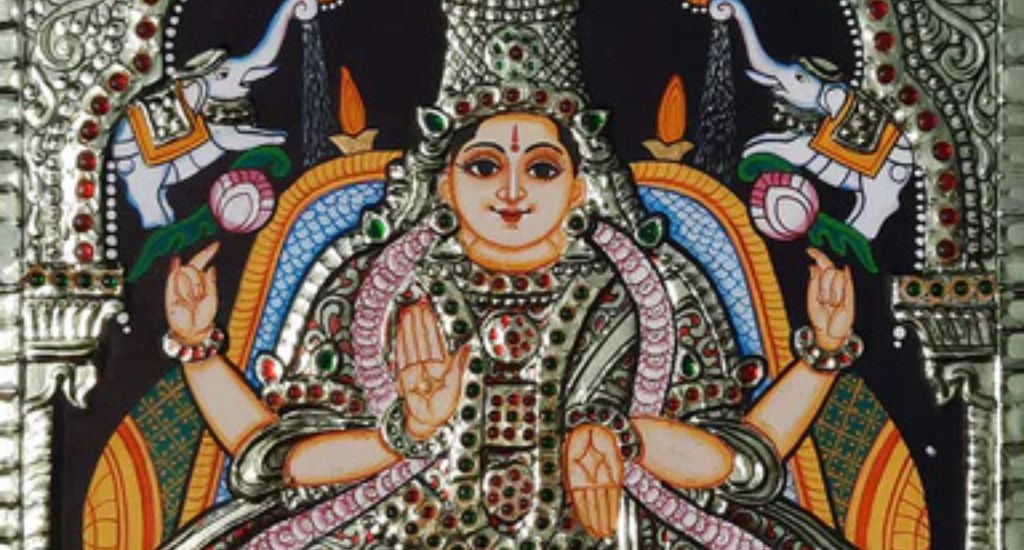
Thanjavur paintings, also known as Tanjore paintings, are generally used to create portraits of Hindu deities, such as lord Krishna, goddess Saraswati, lord Ganesha and so on.
Done on wooden boards, it requires the use of beaten gold leaves to highlight certain aspects of the deities, for instance, their ornaments or their attire. Semi-precious stones are used to adorn the images.
Thanjavur dolls
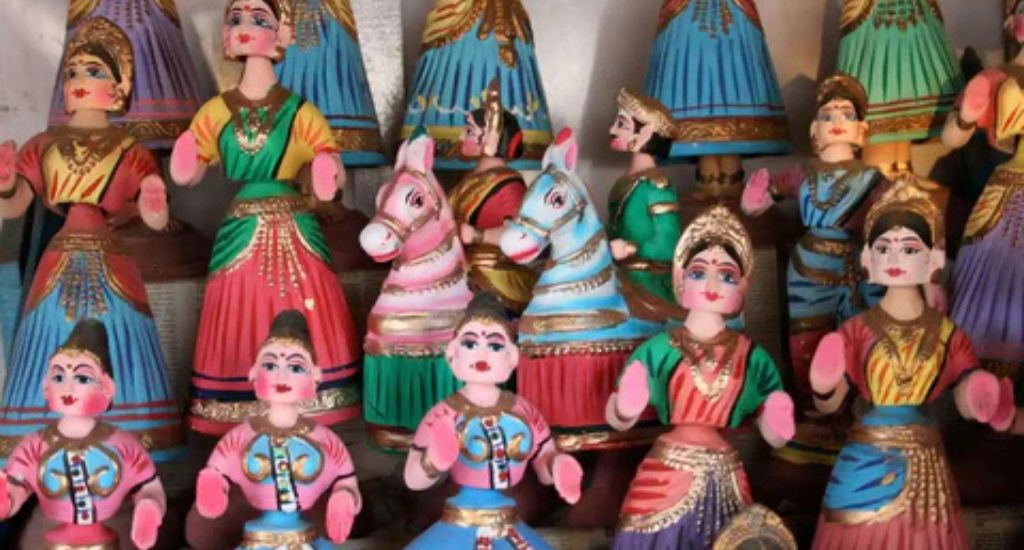
Native to the region of Thanjavur, these are traditional Indian dolls made from tapioca flour, papier-mâché and plaster of Paris. A nineteenth-century craft, it was brought to Thanjavur during the reign of King Sarafoji.
These dolls come in two variations: the bobblehead dolls and the tilting dolls. Highly skilled artisans are required to make their intricate garments and jewellery.
Mahabalipuram stone sculpture
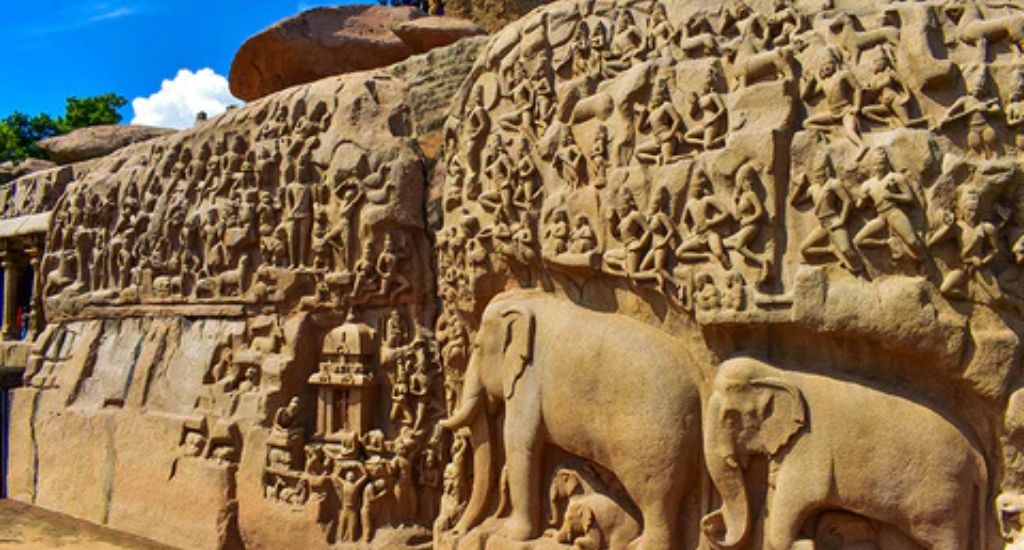
It is a type of stone carving that originated during the Pallava era in the Mahabalipuram region of Tamil Nadu. Certain characteristics typical to this form of stone-carving are slender male and female sculptures with curvaceous bodies and sharp noses, long eyes, wide foreheads, oval faces and long hanging ears.
The sculptures generally carve the images of deities and scenes from Tamil literature.
Toda Embroidery
Toda embroidery, or Pohor, as it is called in traditional Toda language, is done on garments by women of the Toda tribe residing in the Nilgiri Hills of Tamil Nadu.
It is considered a garment that is worn only on special occasions. The embroidery is characterised by geometrical shapes woven into an unbleached white cotton fabric. It has distinctive patterns in red, black and occasionally blue colours. What seems like simple lines and figures to us, have a special meaning to those belonging to the tribe.
Uttar Pradesh
Lucknow chikan craft
Chikankari is an exceptional type of embroidery, generally done on white fabric using white thread. Lucknow is known for producing some of the most exquisite chikankari embroideries.
The designs mostly constitute intricate and gentle floral patterns. Owing its origin to Noor Jahan, chief consort of Jahangir, today the embroidery is done on daily wear apparel such as kurtas, sarees, and many more.
Varanasi Soft Stone Jali Work
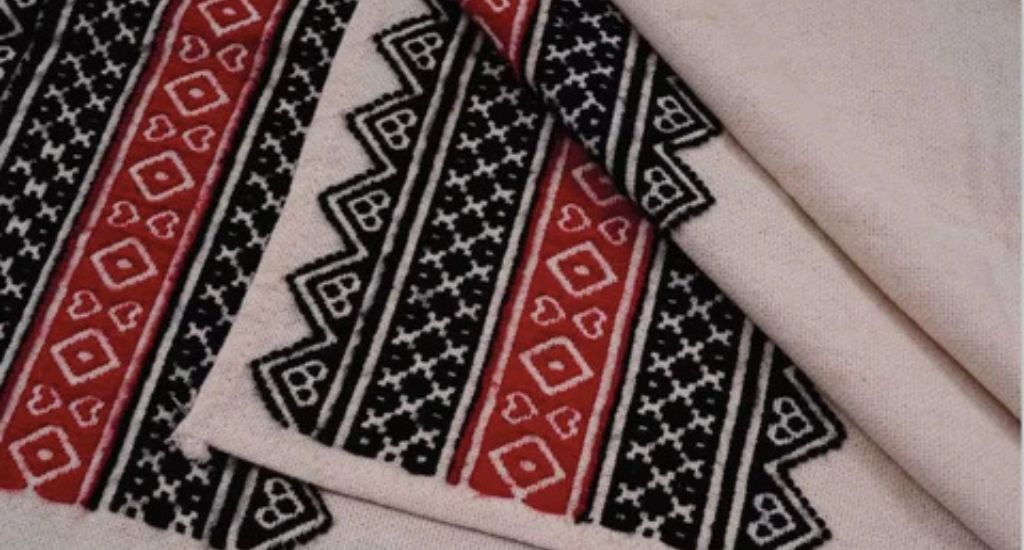
Originating from the Ramnagar fort area of Varanasi in Uttar Pradesh, this jali or fretwork constitutes a detailed and intricate carving on soft stone done by highly skilled craftsmen.
These carefully chiselled stone-craftings adorned with fine inlay work are included in various small objects of utility and decoration such as table tops, boxes, coasters and trays. It is also used in making sculptures of birds, animals and other statues.
Banaras metal repoussé craft
Originating from old Varanasi (Banaras), the craft is a product of generational legacy. Primarily done by the Kasera community of Varanasi, metal repousse is principally the art of embossing on metals.
This art is mostly seen in Indian temples and is also used to make decorated kettles, utensils, boxes, jugs and sculptures of various gods and goddesses.
Handmade carpets of Bhadohi
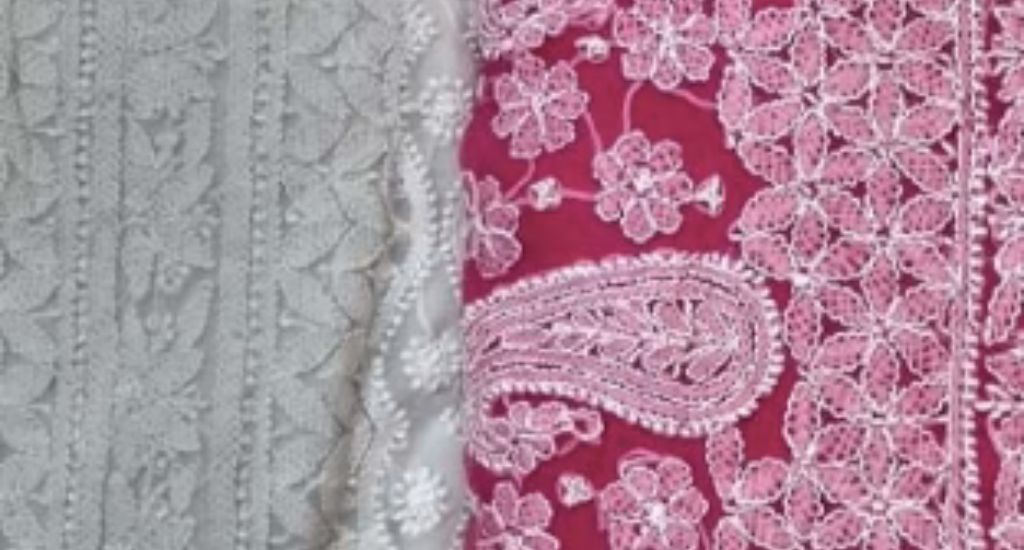
These hand-knotted carpets from Bhadohi in Uttar Pradesh, are made out of wool and cotton yarns. The making of these carpets includes a quintessential technique of using knots and an iron punja (a comb-like object to tighten the knots).
The designs of the carpets are intricate and symmetrical with flowers, trees, depictions of gardens, animals and trelliswork.
India is home to more than 3000 arts and crafts traditions and awarding them with Geographical Identification tags helps in their documentation, promotion and preservation. This list is not exhaustive and will continue to grow as more arts and crafts are awarded with the G.I. tags.
This story first appeared on MeMeraki.
Arushi Mishra is a passionate art enthusiast with a penchant for exploring different forms of art. She has a BA English (Hons) degree.
In the lead image on top is a handmade carpet from Bhadohi in Uttar Pradesh. (Photo courtesy MeMeraki)
MeMeraki is India’s first culture tech platform, using technology to empower and accelerate the artisan creator economy. Their mission is to digitise every heritage art and craft of India to ultimately create sustainable livelihoods for artisans.








